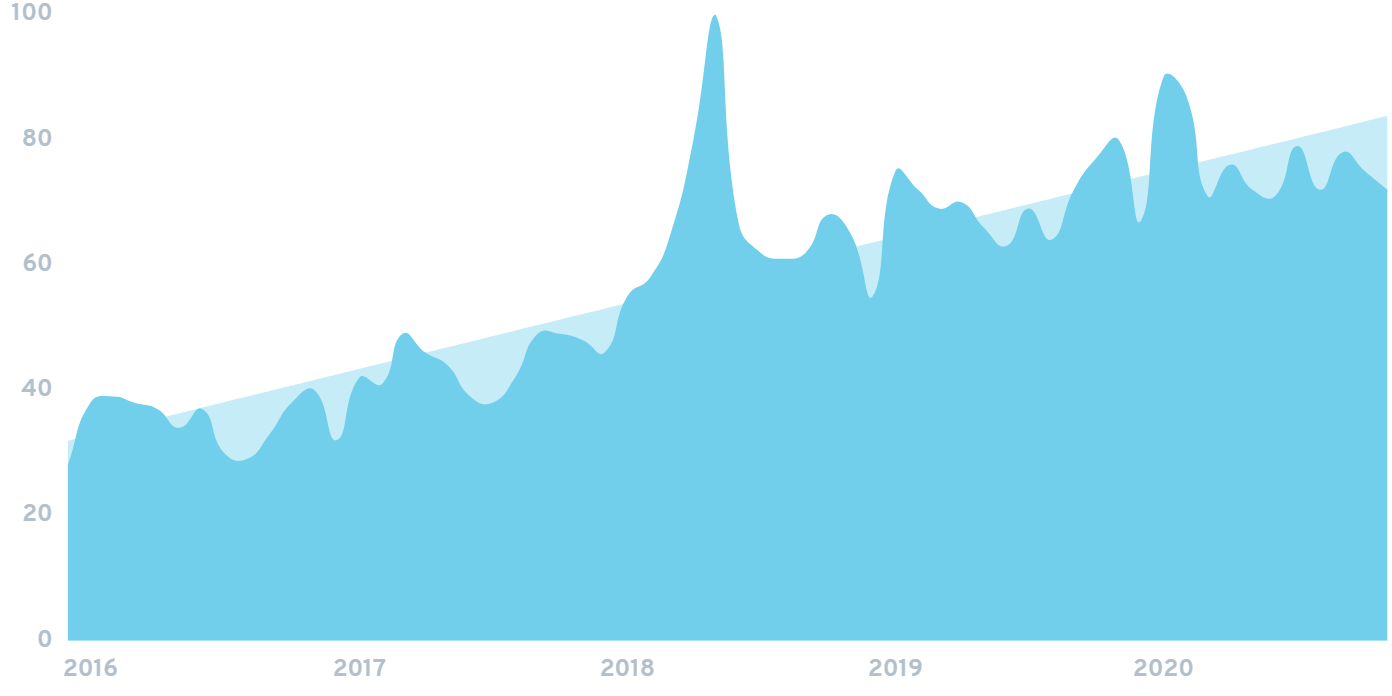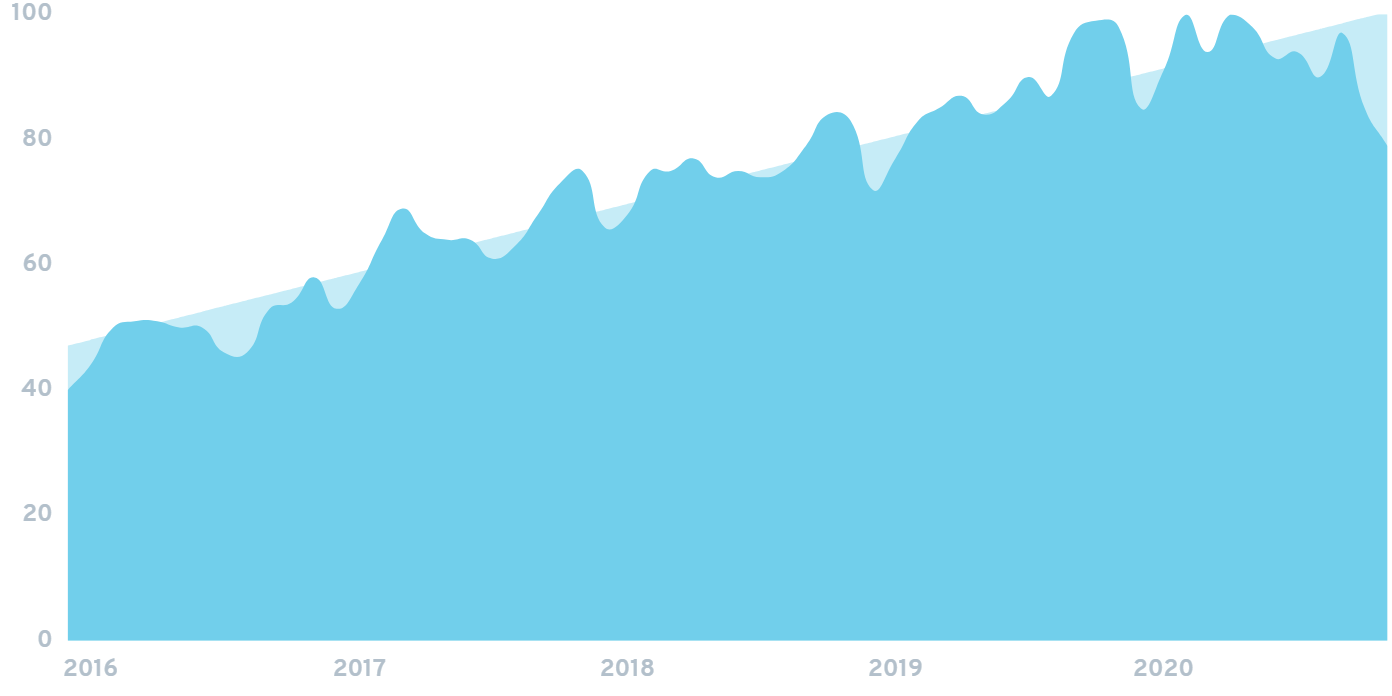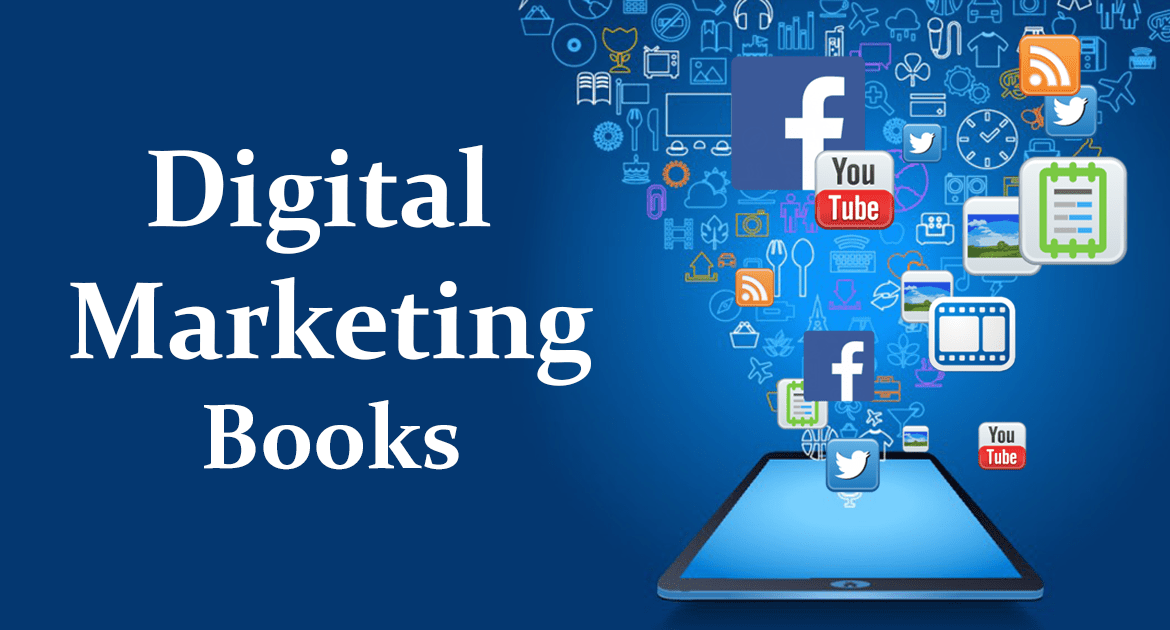Data science is currently on the high rise, with the latest developments in different technology and database domains. Managing this data can be tedious; however, multiple technological advancements can help utilize big data in many ways.
Data Science has been instrumental in the management and analytics behind such massive loads of data; hence one must stay updated with contemporary Data Science Trends occupying the market.
Data Science is not singular, it is a combination of multiple domains like IoT, AI, etc. It is a mix of different analytics, algorithmic computation, and leveraged technology that can be used to solve multiple practical problems out there.
This is an accumulated list of recent developments and applications in this domain to help you keep updated with the latest trends in data science.
Top 11 Data Science Trends in 2025
1. Evolution of Graph Analytics
With data being generated on a massive scale and in different directions, analysis is much harder to follow.
Graph Analytics has shown promising results here through its use as a flexible tool to use graphs to scale complex relationships and analyze complicated data points.
The main motivation behind its use of easier representation and an abstract representation of complex data.
With maximum insights, this technology is now one of the latest trends in data science, solving several applications, like:
- Identification of frauds in the finance industry
- Finding flaws through the analysis of power and water grids
- Multiple areas about Natural Language Processing (NLP)
- Reduction and prevention of financial crime
2. Evolution and Rise of Edge Computing
Currently, edge computing uses sensors to analyze and process information physically near proximity areas. Through rapid advancements of IoT, this technology might overtake mainstream clouds.
Through the latest data science trends, businesses can easily have their streaming data stored close to their sources for real-time data analysis.
In the future, it might be a better alternative than Big Data Analytics, which is quite costly with the requirement of high-end devices.
With the increasing number of sensors, people are shifting to this technology to solve connectivity and latency issues. This can be combined with cloud management to provide a synchronized structure to follow.
3. Storytelling through Data Analysis and Visualisation
Another addition to the data science trends is data visualization, data representation through graphical tools, like maps, graphs, charts, etc.
Once the analysis is dealt with, this helps in understanding the results through patterns, outliers, and repeating trends. It will be easier to understand difficult concepts and identify hidden patterns through a visual representation of data.
One can constantly change what they see and understand the processing through interactive data visualization.
Many businesses and companies are now moving their data to the cloud, causing a surge in need for integration platforms and required tools.
As a result, a greater number of employees can employ data analysis to visualize the single truth version of the data available on the cloud.
4. Rise of In-Memory Computing
In-Memory computing is completely different from the way we process data, and it is on high.
Unlike traditional methods through the use of relational databases and hard drives, this approach uses an in-memory database for computation.
Through middleware software, parallel processing is possible by strong RAM across a cluster of different computers. Here, the processing is done in real-time to provide for better and instant reporting and decision making.
Memory is becoming cheaper, and businesses are looking forward to real-time analytics and results.
This kind of computation enables them to have an instantly available, richer, and more informative dashboard that can make instant decisions for up-to-date visualization.
5. Rapid growth and development of the IoT Industry
It is becoming a common notion that most of the devices in our homes will now be accessible through smartphones, something that is possible with the rise of IoT.
Smart devices like Microsoft Cortana and Google Home have automated regular devices. This helps in the collection of vast amounts of data in homes, in addition to means and guidelines for analysis in a proper manner.
Currently, the industry is largely focusing on the creation of new devices that are better in the collection, analysis, and processing of data.
6. Rise of rules and regulations surrounding Data Analysis

A major effect of data science trends is the increase in laws that govern the capture, use, and analysis of data. Recently, the latest developments from the GDPR (General Data Protection Regulation) sparked the importance of governing data.
It is now mandatory for companies to understand and follow these regulations, besides, to study the impact on present and future operations.
When employed fully, these laws will substantially affect data handling, profiling, and processing. This will make way for Data Scientists who have adequate knowledge of such laws for smooth operations.
7. Enhanced User Experience
User experience is all that matters in the end. Through a number of its sub-domains, Data Science has revolutionized user experience as we know it.
The scientist has to determine the best strategy and methodology that can be adopted to give users a great experience. Several applications have employed this over the years; when clubbed proper UI/UX design, it will result in an ultimate user experience.
Through Natural Language Processing (NLP), consumers can ask questions about the business. Data discovery has been made easier to mine data with additional insights and a smoother process to follow.
Chatbots have given users a way to express their thoughts and post queries, giving businesses an efficient guidebook to rule by.
Real-time systems have made it much easier to run a business, given the dashboard that can be generated with all viable information.
8. Python as the go-to language for Data Science

Python is one of the most versatile and popular languages out there, with solutions meant to solve a variety of computer applications. If you are a Data Science or Artificial Intelligence enthusiast, this is just the language for you.
Python has a massive online community that can be reached out to for support, and the integrations concerning different libraries and languages make it the immediate choice for any project.
The simple syntax, in addition to easy statistical and analytical visualizations, makes it a necessity for data science.
Some advantages that make it such a great option are as follows:
- The OOP adopted concept is of quite some help when it comes to handling large datasets.
- It is highly readable, allowing programmers to save their time with just a few lines of code.
- It can be applied as a coupling language and for rapid application development.
9. Migration of data
In data science, future trends also include the migration of a majority of data to the cloud. The amount of data has skyrocketed in the last few years, thanks to the onset of Artificial Intelligence and Data Science.
This has led to an increased requirement for storage and fast processing of data, thereby paving the way for cloud solutions to utilize data in a more controlled and precise manner.
There are multiple companies like Google, IBM, Microsoft, Amazon offering vast cloud computing services to enterprises of all levels. With a high cap on scalability and low downtime, they look forward to offering quality cloud server services to their consumers.
10. Blockchain as part of Data Analytics
Both these technologies are integral to data science future trends and are on their way to shaping a different future through multiple applications.
Blockchain is primarily is a digital record of data stored on and managed by a cluster of nodes, not bound by a single entity. The chain connects different blocks on the network, secured together with the help of cryptographic algorithms.
Data Science revolves around getting valuable insights from the analysis of data to make better decisions, while Blockchain mainly focuses on the storage and validation of data. These technologies employ several algorithms to solve different applications.
11. Migration of Dark Data to the Cloud
This is the data that is acquired by people and organizations; however, it has not been used by anyone for the derivation of insights.
According to IBM, over 80% of all data is dark, and if tapped into, it can be fruitful for many. In the coming years, it tells that this untapped data will be soon worked upon through migration to the cloud.
With constantly evolving data science technology, this will be helpful for businesses, helping them derive even better insights.
Summing Up!
Over time, businesses will grow and generate even more data. Data Science will be instrumental in the analysis and management of everything generated.
This is not all; in data science, future trends promise a bigger, better future up next. You may also speculate that Data Science is going to be the fourth paradigm in science, owing to its need for greater efficiency and promising results.
Enrolling in a Data Science course will help you learn and use data science trends like a Data Science Expert.









Useful blog. Keep it up.